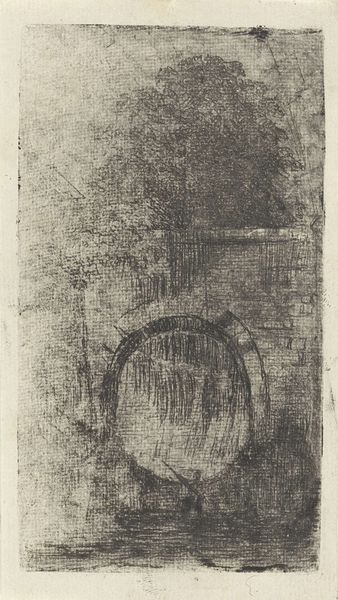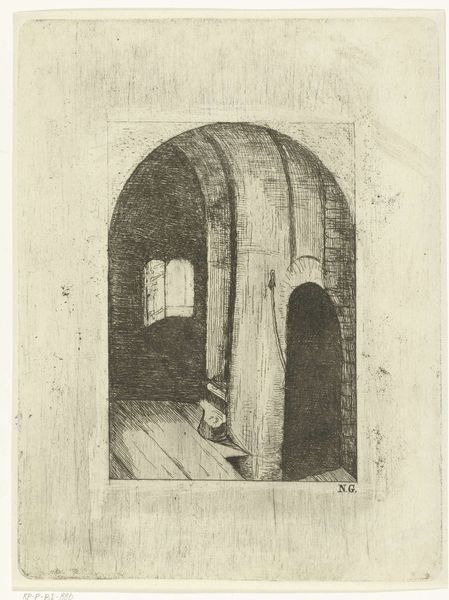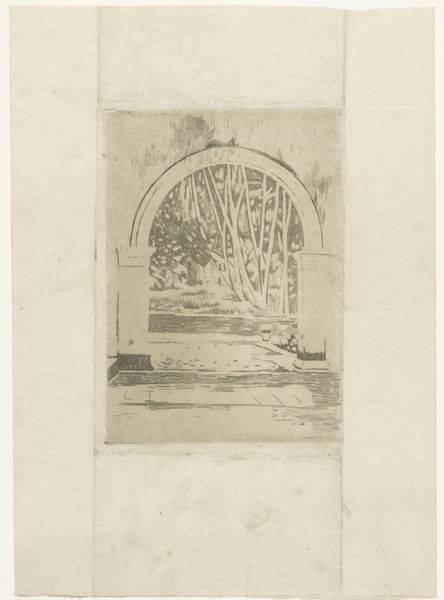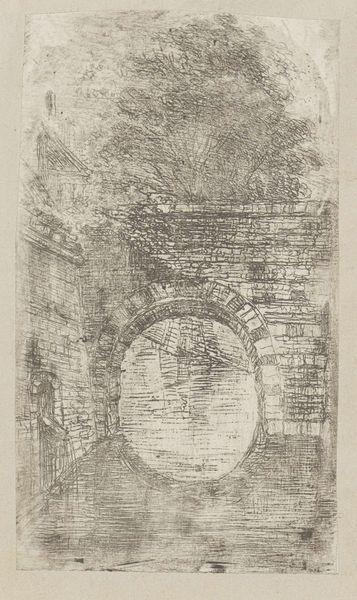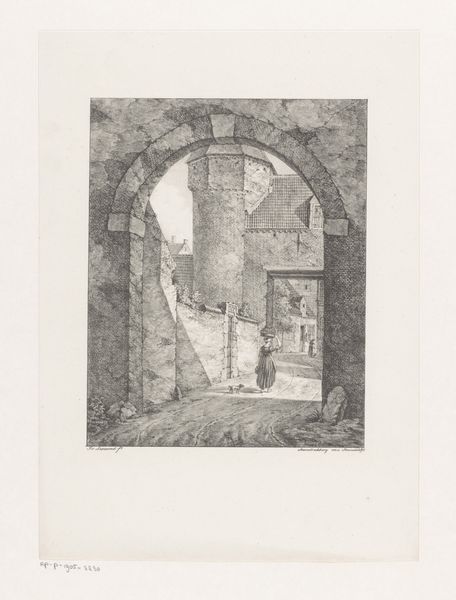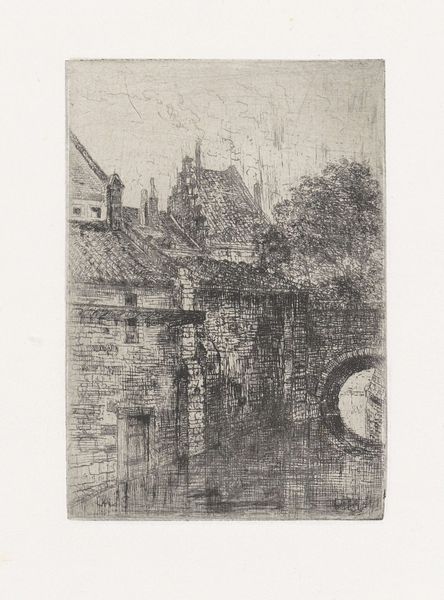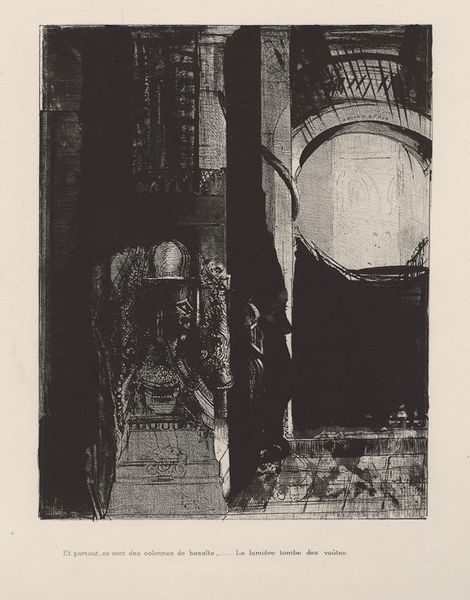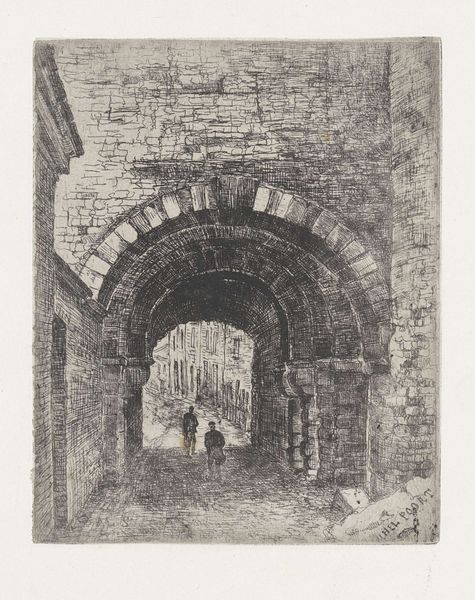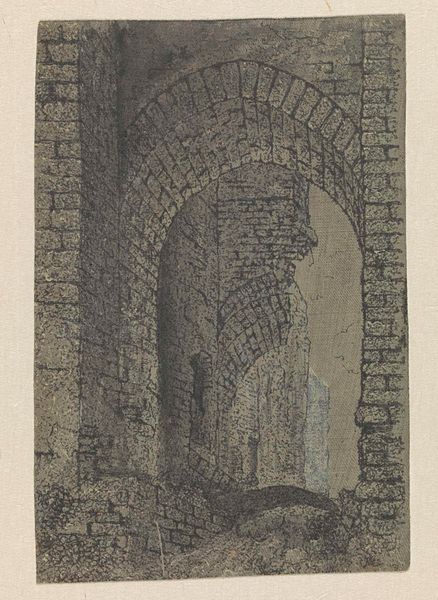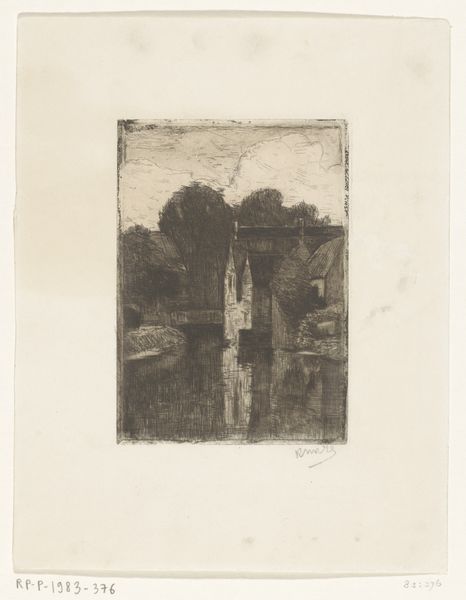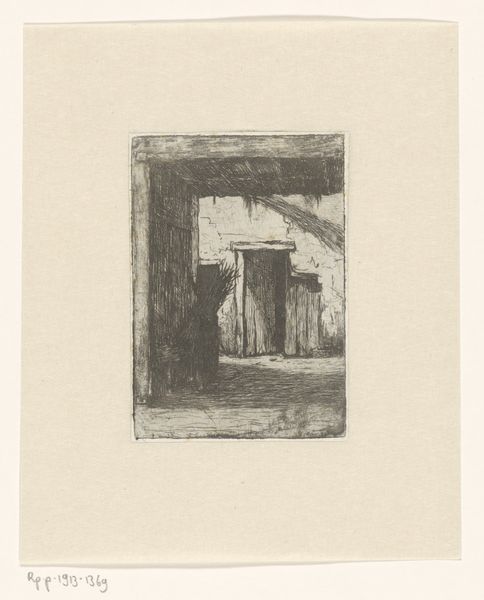
print, etching
# print
#
etching
#
landscape
#
realism
Dimensions: height 143 mm, width 78 mm
Copyright: Rijks Museum: Open Domain
Curator: This print, known as "Brugboog," or "Bridge Arch," is the work of Alexander Schaepkens, likely created sometime in the mid-19th century. It is an etching. Editor: It feels very intimate, despite depicting an outdoor scene. The artist has used incredibly fine lines to capture what I imagine is a very specific place and time. A melancholy atmosphere seems to emanate from it. Curator: The fineness of the lines is indeed crucial. The print medium allows for a density of marks that build up the image, creating a rich, almost velvety texture. Note the tonal gradations, particularly how the darker areas frame and give depth to the light reflected in the water. Also note the architectural solidity. Editor: Absolutely. This bridge cannot be separated from its purpose and the populations it likely served in its day. Considering the urban transformations happening at this time, who had access across the water—who benefitted? It feels like this moment, beautifully rendered, captures some of the socioeconomic currents of the time. Was the archway providing sanctuary to people? Shade? Or was it a boundary for some? Curator: The subject is a simple bridge and, moreover, I’m less interested in its role in societal frameworks than in Schaepkens’ formal use of line, shadow, and reflection. He presents the bridge as a window to the scene beyond, while at the same time focusing our attention on the textural richness of its surfaces. It is simultaneously a frame and an object. It draws attention to depth and flattens into planes through the graphic nature of the work. Editor: But isn't this separation from "societal frameworks" artificial, a privileged position, one could say, blind to social structures and issues? Shouldn’t we also be looking beyond merely aesthetics to unpack histories of mobility, access, and the complex negotiation of urban space that an everyday structure implies, a very necessary conduit. Curator: Well, there's an undeniable precision and attention to the visible world here—that should, I hope, allow for multiple interpretations. The dialogue it fosters between form and context only serves to enhance one's appreciation for its layers of complexity, after all. Editor: A fitting summation to encourage a more inclusive perspective of this piece indeed. I leave now, hoping those who consider it, see its potential within a broader scope of historical experiences, that might also recognize the social intricacies.
Comments
No comments
Be the first to comment and join the conversation on the ultimate creative platform.
